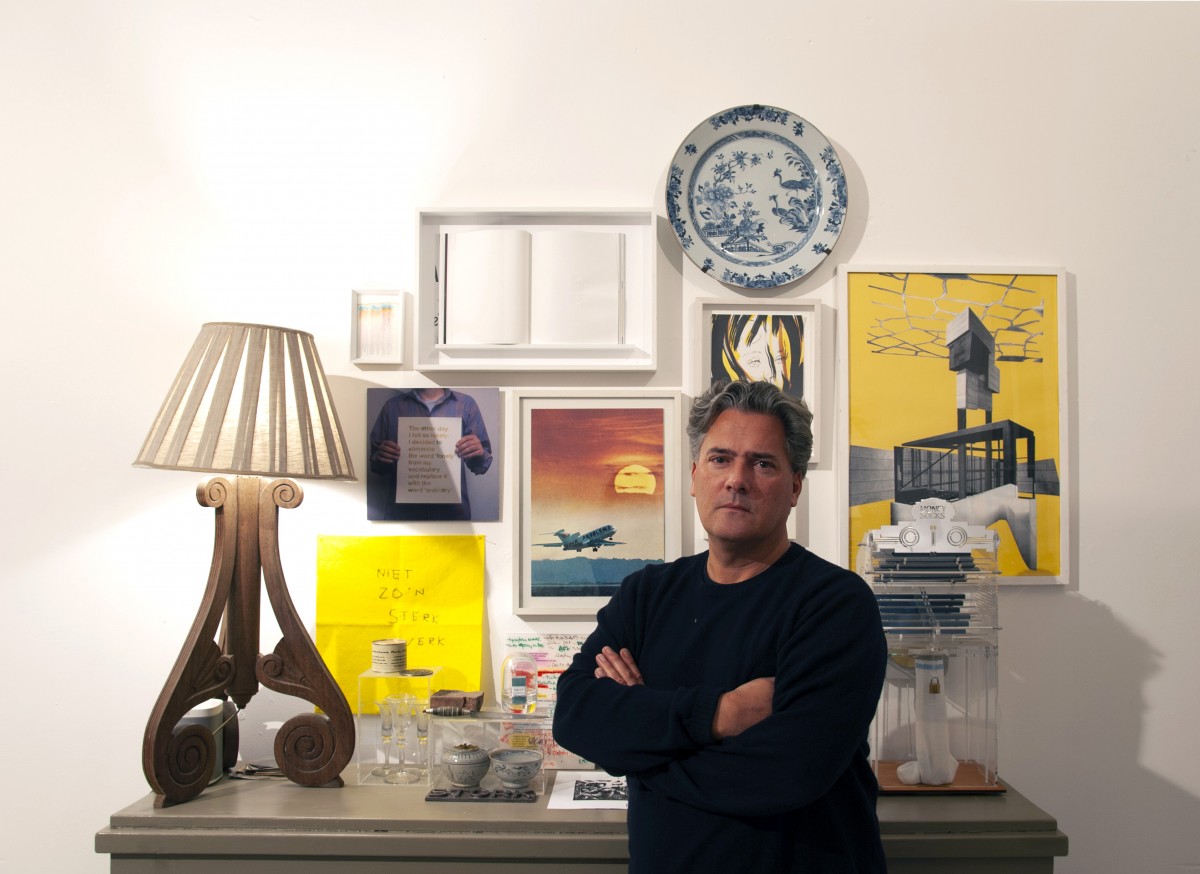“For a long time, I used to call myself a curator. Nowadays I consider myself more of a facilitator, someone who creates opportunities and offers artists a stage. A curator makes decisions and tries to make his own mark. I try to steer a bit less and give the other person a voice. I enjoy letting other people shine, to let them be who they are and what they are good at.
The more you learn, the more you become aware of what you like and what suits you
I became an ambassador for Young Collectors Circle because I feel that it is extremely important that young people learn to familiarise themselves with art, while simultaneously learning to look at it a bit better. The art world can be a dangerous place. For example, young people who have just bought a house may look at that empty white wall with feelings of uncertainty. They are often vulnerable to opportunists, who pressure them into buying something really expensive, something they may regret later on. The more you learn, the more you become aware of what you like and what suits you.”
Collection
“We have a fairly honest collection. We’ve obtained most of the works through friendships: some of them have been swapped, others were gifted to us. The collection has no common thread or underlying system. A few of the works are just there because they came my way. I don't necessarily have them because they were made by big and brilliant artists, but because I know these artists really well, because love their personality or because I feel that the work is inherently good. The person behind the work is more important to me than the work itself. For me, it's much less about what they do and more about who they are. There is not a single object in my house without a story behind it. I think it’s important that I know what a painting is about and who is on it when I look at it. I am against the glorification of the object in itself. Without a story behind it, it is just a canvas with paint on it.
I don't collect works because they were made by big and brilliant artists
When you want to buy a work of art, you secretly become a bit obligatory. Something about it moves you. Sometimes it's a matter of beauty, but when you've been in the art world for so long, beauty becomes a bit of a stretchy concept. I don't buy a work with the notion of hanging it over my sofa. I don't really think about it in advance. For example, soon the the inflatable object “Manifesto” from Multiple Choice will arrive, which measures 4 meters in height. I have no idea where I’ll put it. I buy it because I like them as a collective.
I don't really have a favourite. When all the stories are equally important, there is no favourite to choose from. The works in the collection share my love. If someone asks me if I would mind if the objects were gone, I say no, because the works are a part of me and I am not very attached to the physical object. It is a bit remarkable, to own things and, at the same time, be able to live without them. That's because the stories, all the things you've been through, the conversations and the studio visits, are so much more valuable to me. I don't see myself as an art collector, because to me, being a collector is not a goal in itself. I’m surrounded by art 24/7, it's just a part of my life. I like to surround myself with memories, so perhaps, I’m a collector of stories.”
You don't have to look at every single object, you’ll often know what you like in a split second
Tips & Tricks
“Go and see as much art as you can. Go everywhere: exhibitions, galleries, fairs, museums. If you see a 'museum' sign, walk towards it, even if you don't know what you’re going to find. By seeing as much as possible, you’ll learn to look more intently and you’ll develop a good eye. See what you like and what appeals to you. Many people are unsure about what to buy and always seem to gravitate towards the items that have already been sold. You don't have to look at every single object, you’ll often know what you like in a split second, so look selectively. And don't feel embarassed when you don't like the work of a very important artist. It’s fine, it’s a decision that you get to make yourself.”
